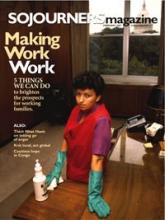Thirty-six million people living in poverty; almost 47 million people without health insurance; 2 million households declaring bankruptcy—that was the United States in 2006. The opportunity ladder is in splinters for tens of millions, and as many more are teetering on the edge. Only a bold, comprehensive vision for reform will help us start to properly address this crisis in the world’s wealthiest nation.
The challenge to end poverty and improve economic opportunities for low-income households must be linked to the broad economic insecurity plaguing America’s middle class. As the concentration of income and wealth has reached historic proportions, Americans at the bottom and the middle of our income distribution have suffered the consequences. Rising costs of essentials—health care, housing, energy, college—are a shared anxiety. A reliance on high-cost debt, risky home finance (and refinance) deals, and the proliferation of predatory lending threaten to strip the working poor and the middle class of the few assets they can claim.
For many advocates of the poor, standing up for the middle class is seen as abandoning the most vulnerable of our population. But the fates of these two groups are inextricably linked. Those living in poverty are not just aspiring to surpass some arbitrary threshold of income; they are striving to work their way into the security of the middle class. They’re toiling in the hopes of being able to send their kids to college, so they in turn can get jobs with health care, afford homes in safe neighborhoods with good schools, and if they’re lucky earn a paycheck that allows them to save for retirement. Today, these qualities that we associate with being “middle class” are all under attack.
Read the Full Article

